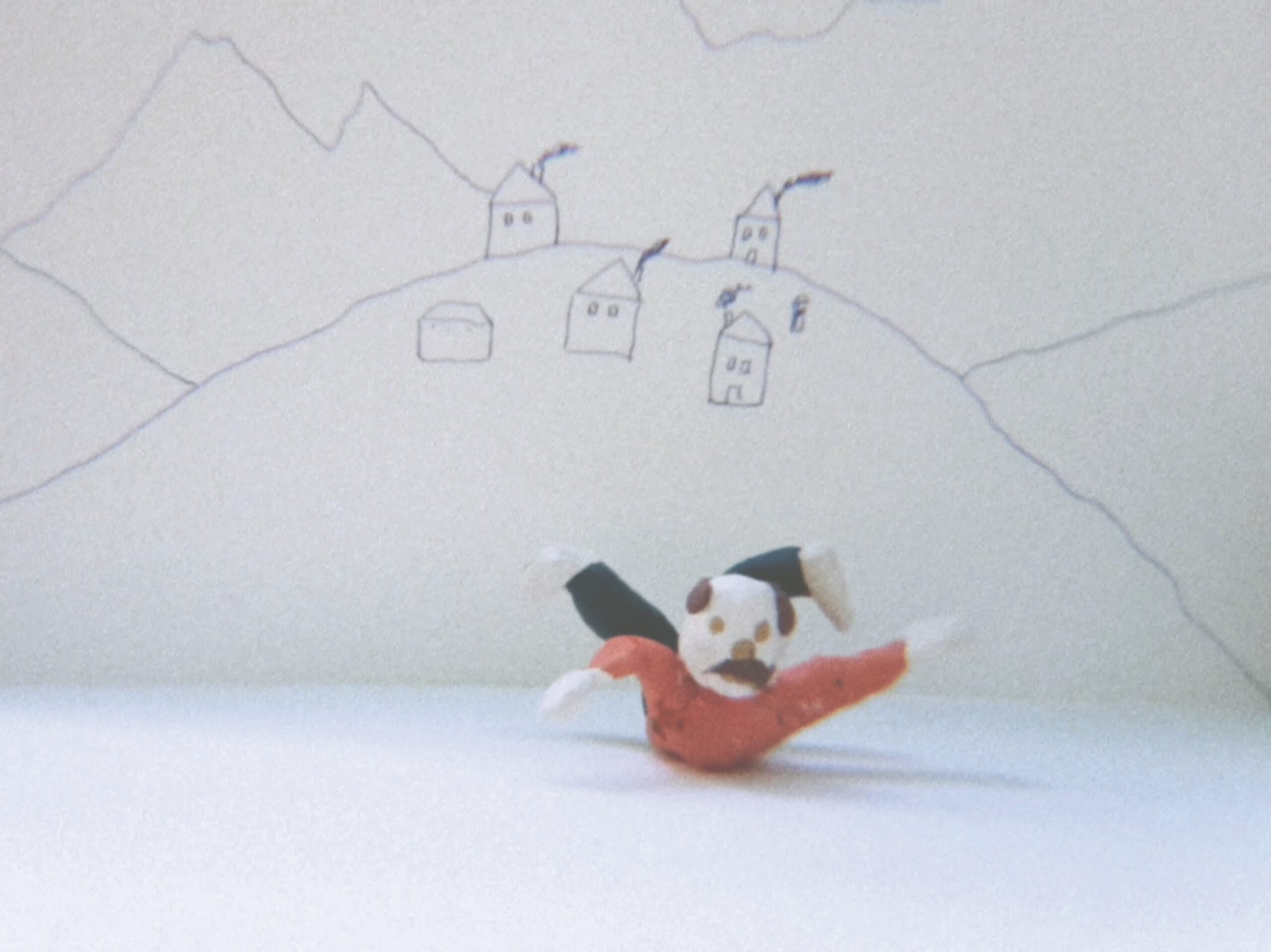In twelve minutes, Gernot Wieland tells a deep and absurd story about the yearning for individual freedom and about collective compulsion to conform. With tragicomic childhood memories and reflections on life as a Kafkaesque short story, as well as childish pencil drawings, plasticine figures, metaphorical Super 8 film footage of staircase climbs, and mysterious crystal objects formed from wooden sticks, Wieland captivates our attention. Fact meets fiction; dynamic narrative meets poetic visual sequences and a hypnotic soundscape. In the conflation, a magical realism unfolds.
From the first-person perspective, but distanced by an Austrian-tinged English, Wieland recounts the dress-up adventures and emigration dreams of a school friend that ended with his admission to a psychiatric hospital and a diagnosis of ›schizophrenia‹. The consequences for the first-person narrator are ›deportation‹ to an ›uncle‹ and the internalization of the collective mythology of his village, which considers the imitation of crystal figures as a coping strategy for grief and anxiety states. On a visual level, some images function as documents underpinning the narrative, others illustrate the absurdities of everyday life, and yet others are attempts to review existing and perceived power relations conceptually. Guiding the multi-layered narrative is a general amazement about how we got here. In an affectionate and humorous way, Wieland deconstructs a childlike universe and visualizes the hidden ruins of the collective psyche, which are inherited but which we do not have to confront powerlessly. In Ink in Milk, the memories are not closed narratives, but living stories that unravel, reconnect, and allow us to find ourselves. The projection of the video onto the back of a closet epitomizes the first-person narrator’s experience of exclusion by a teacher who kept a list of the ›non- conformists‹ and punished them with perfidious methods. Thus, Wieland allows us to physically re-experience becoming aware of one’s own body. »How we place our bodies in relation to each other is the start of politics«, is one of Wieland’s central statements in the video.
In the end, Ink in Milk shows a possible way out how we can write our own narrative and resist the compulsion to inscribe ourselves in a collective narrative. The world of fantasy and imagination lives on in a normative society, just like the ›dancing animals‹ in a mixture of ink and milk.
Ieva Akule, Videonale.18
Gernot Wieland (b. 1968 in Horn, Austria) studied at the University of the Arts in Berlin and at the Academy of Fine Arts in Vienna. His films have been shown, for example, at the International Film Festival in Rotterdam, the Kunstverein in Kassel, the Kunsthaus in Graz and the Liverpool Biennial. He lives in Berlin.
Ink in Milk, received the EMAF Media Art Award of the German Art Critics, Osnabrück (2019) and honorable mention at the Short Film Festival Hamburg (2019).

